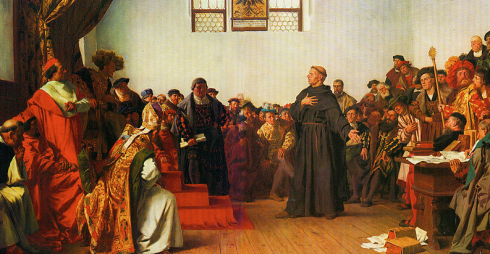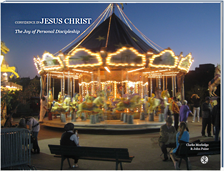Tomorrow, October 31, 2017, marks the 500th anniversary of the nailing of Martin Luther’s Ninety-Five Theses to a church door (Actually, Luther probably got the church janitor to do it, and he probably used glue and not nails, but that is another story…) So, what were the “Ninety-Five Theses,” anyway?
Well, to tell the truth, the “nailing” of Luther’s document to the church door was no big deal, in and of itself. It was like stapling a poster up at a college bulletin board, or posting a message on Facebook. As a university theology professor, Luther wanted to hold a discussion with church leaders and other academic colleagues, coming up with 95 propositions for debate. Like most university academic discussions, such debates rarely, if ever, “go viral,” even today. Academics normally can not compete with ESPN. However, the big deal was what happened in the following four years, after Luther posted his theses.
In Luther’s day, the Western church was riddled with corruption, and everybody knew it. Initially, Luther objected to the sale of indulgences, whereby church officials would urge people, who had no access to the Scriptures in their native language, to give money to the church, in exchange for lessening the punishments of loved ones, who were suffering in purgatory. In 1517, Luther still believed in the doctrine of purgatory itself, as acceptable Christian doctrine.
So, Luther was originally tapping into the widespread frustration with the medieval church. For example, from proposition 82, Luther argued that the papacy was more concerned about making money, than actually helping people who were suffering in purgatory:
- “Why does not the pope empty purgatory for the sake of holy love and the dire need of the souls that are there if he redeems an infinite number of souls for the sake of miserable money with which to build a church?
Or even from proposition 86:
- “Why does not the pope, whose wealth is today greater than the wealth of the richest Crassus, build this one basilica of St. Peter with his own money rather than with the money of poor believers?”
But there were hints that Luther was pressing against something deeper, within the medieval Catholic system, than simply corrupt church practices. Consider the first three propositions:
-
- When our Lord and Master Jesus Christ said, “Repent” (Mt 4:17), he willed the entire life of believers to be one of repentance.
- This word cannot be understood as referring to the sacrament of penance, that is, confession and satisfaction, as administered by the clergy.
- Yet it does not mean solely inner repentance; such inner repentance is worthless unless it produces various outward mortification of the flesh.
Here, Luther shows how he was influenced by Erasmus’ Greek edition of the New Testament, published just a year earlier, before Luther’s famous 1517 date. “Doing penance,” according to the Latin Vulgate translation of the Bible, is not the same thing as “repentance.” It was Luther’s study of the Scriptures that forced him to look at reality anew and afresh.
And this is what rattled church leaders.
Luther was hoping for an opportunity to express his views, and defend them. But he soon learned that certain church authorities, who benefited so much from corruption, refused to engage him in authentic debate. One of the few times Luther was allowed to debate his views, almost led to his undoing. At the Leipzig disputation in 1517, his brilliant opponent Johann Eck, forced Luther into a corner. Luther finally had to admit that he was calling into question the infallibility of the church, through its popes and councils.
Now Luther was in trouble. The problem was that Luther’s ideas were starting to catch on with folks outside of the academic community, both among the nobility, and the peasant poor. Luther was a master of the new technology of the printing press, and he put it to use. Luther fought back.
The church leadership simply could not tolerate such dissension. For if Luther would not be silenced, they were concerned that Luther would open the floodgates of false doctrines and heresy to proliferate, and destroy the unity of Christendom through schism. Their fears were not without some warrant. For church authorities, Luther had to be stopped.
But Luther was held captive to the teaching of the Holy Scriptures. Luther was far from perfect, but he knew his cause to be just. To him, the very message of the Gospel of Jesus Christ was at stake. If he could be persuaded that he had erred, in interpreting the Bible, he was open to correction. But by the time of his grand appearance before the Holy Roman Emperor Charles V, at the Diet of Worms, in 1521, he had become convinced of the Bible’s teaching, of justification by faith alone, and salvation by grace alone.
His answer to the Emperor, though scholars are not convinced of the actual wording, nevertheless still echoes throughout the course of history:
- “Here I stand, I can do no other, God help me. Amen.”
The church and world have never been the same since.
…And now… Duh-duh-dahh!! ….. For a rather happy take on Martin Luther and the Reformation, you will not want to miss the “Reformation Polka,” by Baylor University professor of history, Chris Gertz:



What do you think?